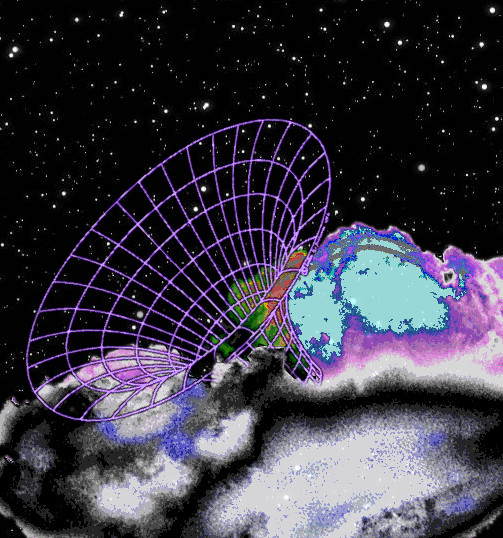Quick glimpse sheds light on black holes
 Japanese astronomers have spotted a black hole one hundred thousand times the mass of our Sun poking out from a cloud of molecular gas near the centre of our galaxy.
Japanese astronomers have spotted a black hole one hundred thousand times the mass of our Sun poking out from a cloud of molecular gas near the centre of our galaxy.
The finding provides important insight on how supermassive black holes like the one at the very centre of the Milky Way may have been created.
It is well established that supermassive black holes of up to ten billion solar masses reside at the centres of galaxies, holding billions of stars in a coherent form with their mind-bending gravitational forces.
However, scientists have wondered just how they get so massive, especially as they appear to have been in place when the Universe was comparatively young — only a few hundred million years old.
One theory is that black holes of a few hundred thousand solar masses exist as seeds for their more massive counterparts. Unfortunately, such intermediate-mass black holes have persistently evaded detection, with only a handful of convincing candidates currently known.
Tomoharu Oka and colleagues using the high sensitivity and resolution of the Atacama Large Millimeter/submillimeter Array in Chile have observed a cloud of molecular gas 60 parsecs away from the Milky Way’s centre.
They used simulations to infer that the physical motions of the gas in this cloud can only be explained by the presence of an intermediate-mass black hole hiding in its midst.
The researchers also found that the emission from this gas cloud closely resembles a scaled-down version of the quiescent supermassive black hole at the centre of our Galaxy.
The next steps will focus on monitoring this source to confirm its nature, as well as using this technique to discover more such intermediate-mass black holes.







 Print
Print